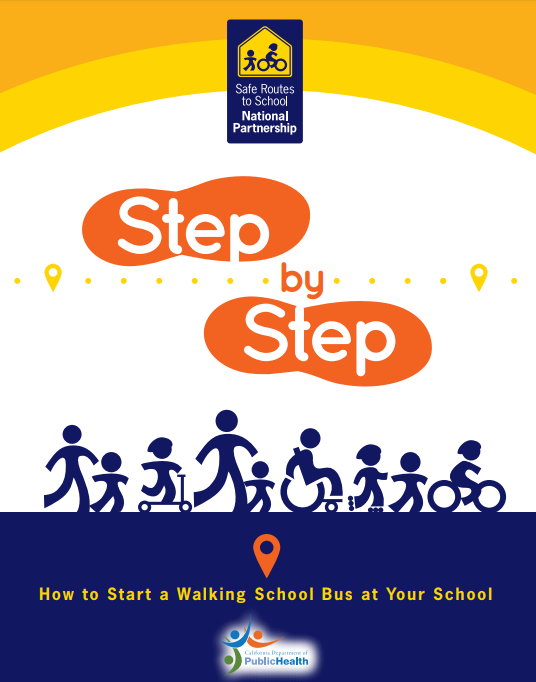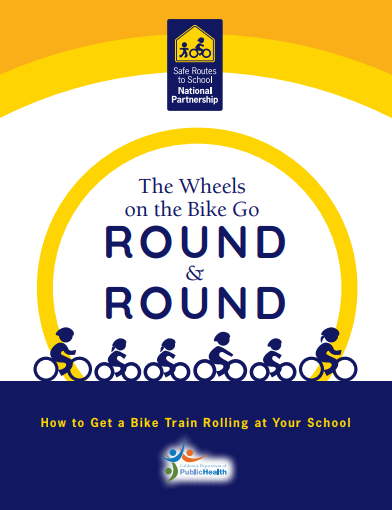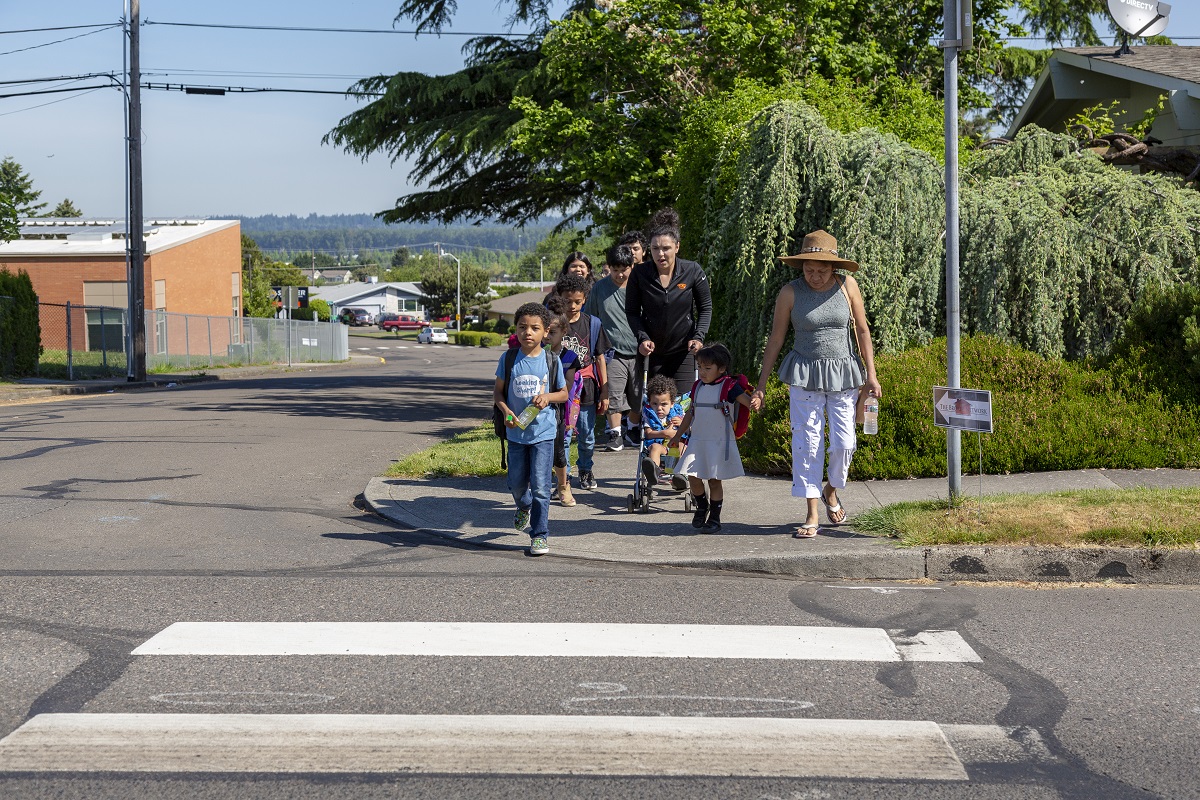“It’s fun to have fun, but you have to know how.” Dr. Seuss
 As anyone who has walked anywhere with a whiny child knows, walking with kids isn’t always fun. Physical activity takes work, and while some kids and adults love the feeling of pushing their bodies, others do not. But having fun matters. Science shows that having fun helps us learn, makes us more open to new experiences, and helps us connect more with other people. To generate healthier kids and healthier communities, we want to help kids associate the feeling of moving your body with enjoyment, not with drudgery. So how do you keep the fun and excitement in a walking school bus or bike train?
As anyone who has walked anywhere with a whiny child knows, walking with kids isn’t always fun. Physical activity takes work, and while some kids and adults love the feeling of pushing their bodies, others do not. But having fun matters. Science shows that having fun helps us learn, makes us more open to new experiences, and helps us connect more with other people. To generate healthier kids and healthier communities, we want to help kids associate the feeling of moving your body with enjoyment, not with drudgery. So how do you keep the fun and excitement in a walking school bus or bike train?
“Games, colors, and music!” recommends one veteran walking school bus leader. A portable music player creates energy and fun – let kids choose the music or rotate through a playlist that works for everyone. Colorful signs, flags, and banners make kids more visible and generate a celebratory air. Lights on bikes or walkers create a cheery and magical look in the deep of winter when travel to school may take place in the dark.
 Many walking school buses use competitions between different school buses to motivate students. Or have students work together instead of competing against each other, collaborating to meet a certain goal, such as jointly covering enough miles to walk across your state or the country. Little prizes and occasional treats also add enjoyment to an activity – but make sure that the rewards don’t start to seem like the point, which has been shown to decrease interest and enjoyment in an activity itself.
Many walking school buses use competitions between different school buses to motivate students. Or have students work together instead of competing against each other, collaborating to meet a certain goal, such as jointly covering enough miles to walk across your state or the country. Little prizes and occasional treats also add enjoyment to an activity – but make sure that the rewards don’t start to seem like the point, which has been shown to decrease interest and enjoyment in an activity itself.
Games are a great way to make things fun. Games can be physical, as long as the energy doesn’t detract from safety and you are not on a busy arterial or crossing a dangerous street. Options include silly walk competitions, challenges to see who can hop the most times or the longest, alternating actions like skipping, hopping, grapevining, and jumping, or playing follow the leader and letting different kids come up with actions for the others to follow.
Other walking games are verbal. Which games work well will depend on your age group. Favorites include I Spy, 20 Questions, counting the number of certain things you can find (such as birds, bicycles, or red cars), and any other kind of word game that your group enjoys. Telling jokes is another reliable favorite with younger elementary school kids.

Older kids may love the riddle guessing games that I played at camp as a kid, called lateral thinking riddles. The leader poses the riddle – for example, “A man walks into a restaurant, orders pelican soup, takes one bite, then leaves and kills himself. Why?” The guessers ask yes/no questions to try to deduce what must have happened and the leader answers them. Here’s a list of 10 popular ones. The riddles engage creativity, teamwork, deduction, and other great skills – and also make the time fly as the kids ponder the problem rather than the trip to school.
Building fun into your walking school bus can be spontaneous and intermittent, or it can involve a detailed plan or even a formal curriculum. A walking school bus initiative at Durfee Elementary School in El Monte, California, led by Alta Planning + Design, had an environmental theme. A local environmental group, Amigos de los Rios, helped develop mini science projects for the six daily walking school buses that were conducted along the way to school. Each week Amigo de los Rios taught walking school bus leaders how to lead that week’s activities with the students, and then the walking school bus leaders implemented the projects during the daily walking school buses. One project involved wildlife observations – students found something to observe, such as a nest, and returned each day to make observations about the wildlife and their habitat. Students also analyzed the environmental benefits of city trees. The project built from week to week as students selected specific trees on their walks, mapped them, identified the type of tree and learned the scientific name. Next, students measured the square feet inside and outside the tree’s canopy, and used a heat gun to measure the heat of the ground beneath the canopy and outside the canopy, learning how much reduction in urban heat is provided by city trees. Students estimated how tall the trees were, and used that to determine how old the trees might be, and even calculated the carbon sequestration provided by the trees. Not only did students have their interest and curiosity engaged on the walk to school, but they also learned about their local natural history, the immediate environmental benefits that the trees provided to animals and humans in the area, and the long term environmental benefits to life on earth.
Planning for fun with a walking school bus or bike train can be as easy or complex as you want. And the benefits are well worth it – having fun yourself, ensuring that kids want to participate in your walking school bus or bike train, keeping kids engaged so they are less likely to get into trouble, and building a generation that wants to walk and bike. What else keeps kids and adults engaged and happy on your group or family walks and bike rides? Share your ideas with us!
Download Step by Step: How to Start a Walking School Bus at Your School
Download The Wheels on the Bike Go Round and Round: How to Get a Bike Train Rolling at Your School

